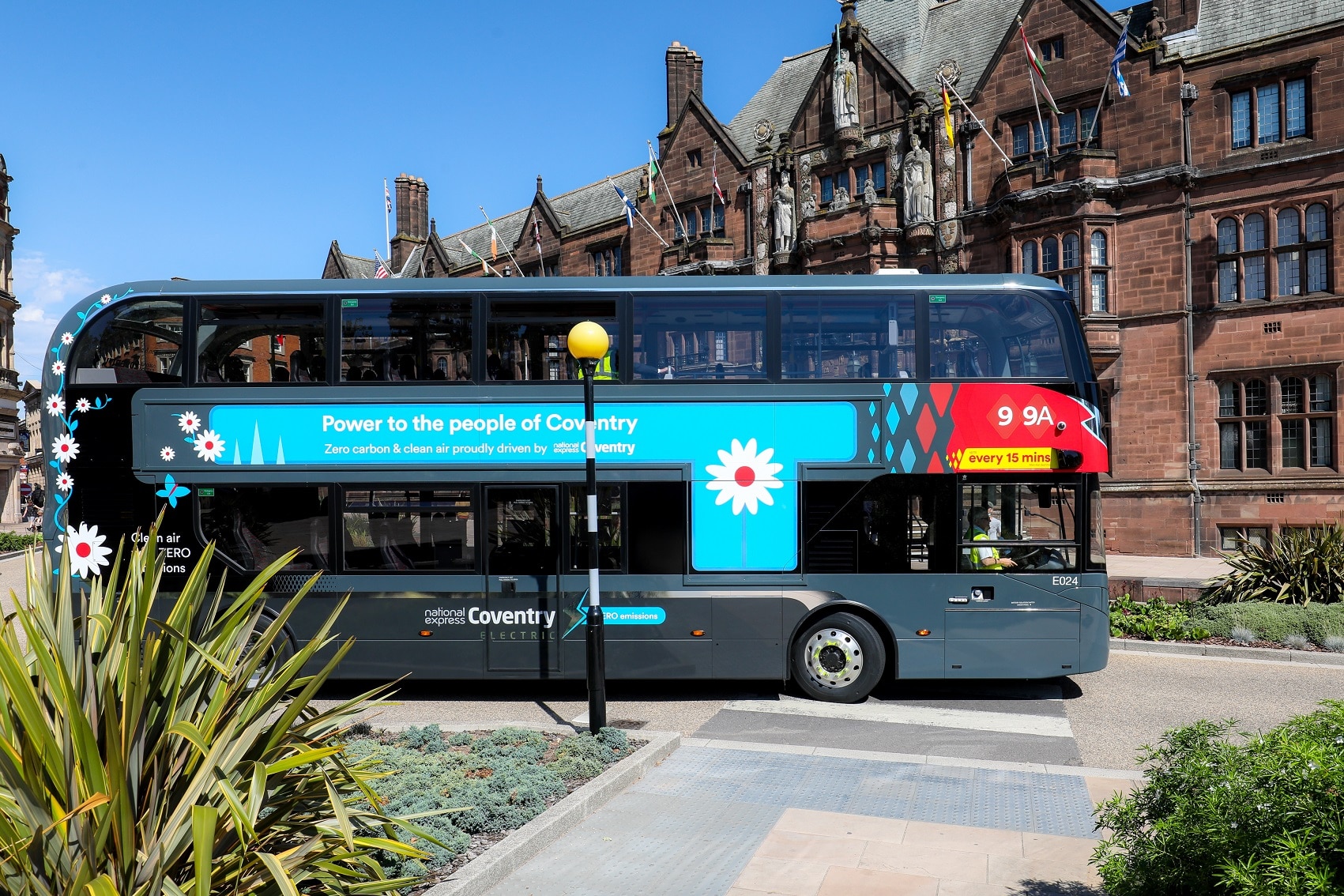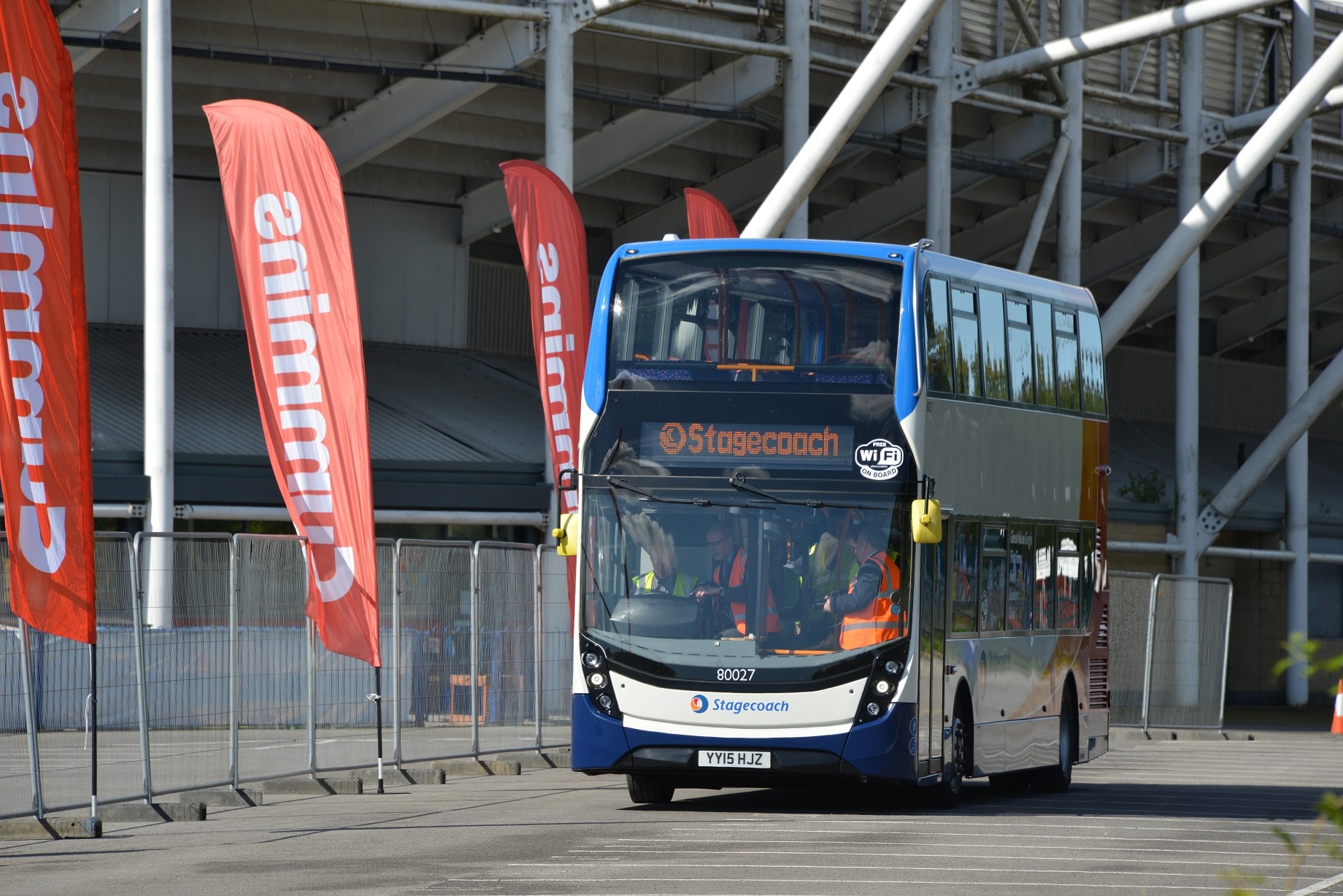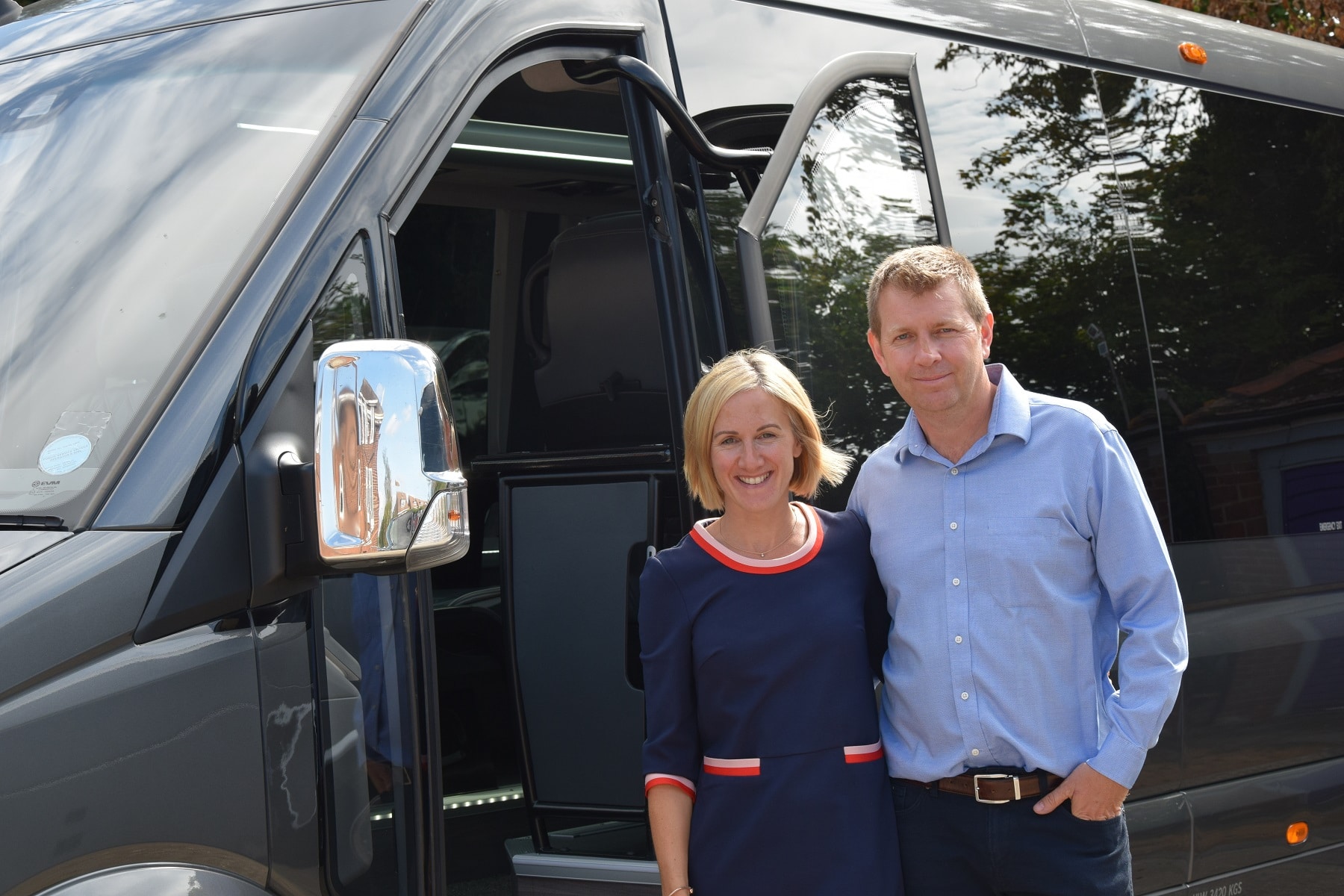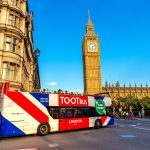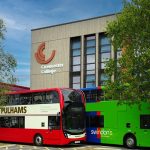In March 2020 National Express became the first large group to end its procurement of diesel buses by committing to the purchase of zero-emission models only from then onwards. It was an ambitious step for the business and forms part of a two-stranded approach that will see its bus fleet become entirely zero-emission by 2030.
Since then, 19 BYD ADL Enviro400EV battery-electric double-deckers have joined the National Express West Midlands (NXWM) fleet. 10 more are with National Express Coventry. The operator is now preparing to ramp up its adoption of battery technology. When doing so, it will use the experienced gained from those 29 buses as a knowledge bank.
National Express zero-emission bus plans soon to accelerate
The transition has been accelerated by governmental approval of Coventry’s All Electric Bus City business case. That will see every bus in Coventry switch to battery-electric power thanks in part to £50m of public funding. All operators in the city will benefit and the project will be led by Transport for West Midlands.
Aspirations for the wider NXWM business are similarly bullish. Managing Director David Bradford told the Confederation of Passenger Transport UK Bus and Coach Conference on 12 January that he would like to see 500 zero-emission buses in service when the Commonwealth Games come to Birmingham in July 2022. It does not rule out retrofitting existing diesel buses as part of the shift.
The 29 Enviro400EVs are fruits of a long-term partnership between NXWM and ADL to which BYD and Zenobe are recent additions. Zenobe is responsible for providing power for the buses on the most cost-effective basis. It is also involved in analysing and minimising their energy consumption.
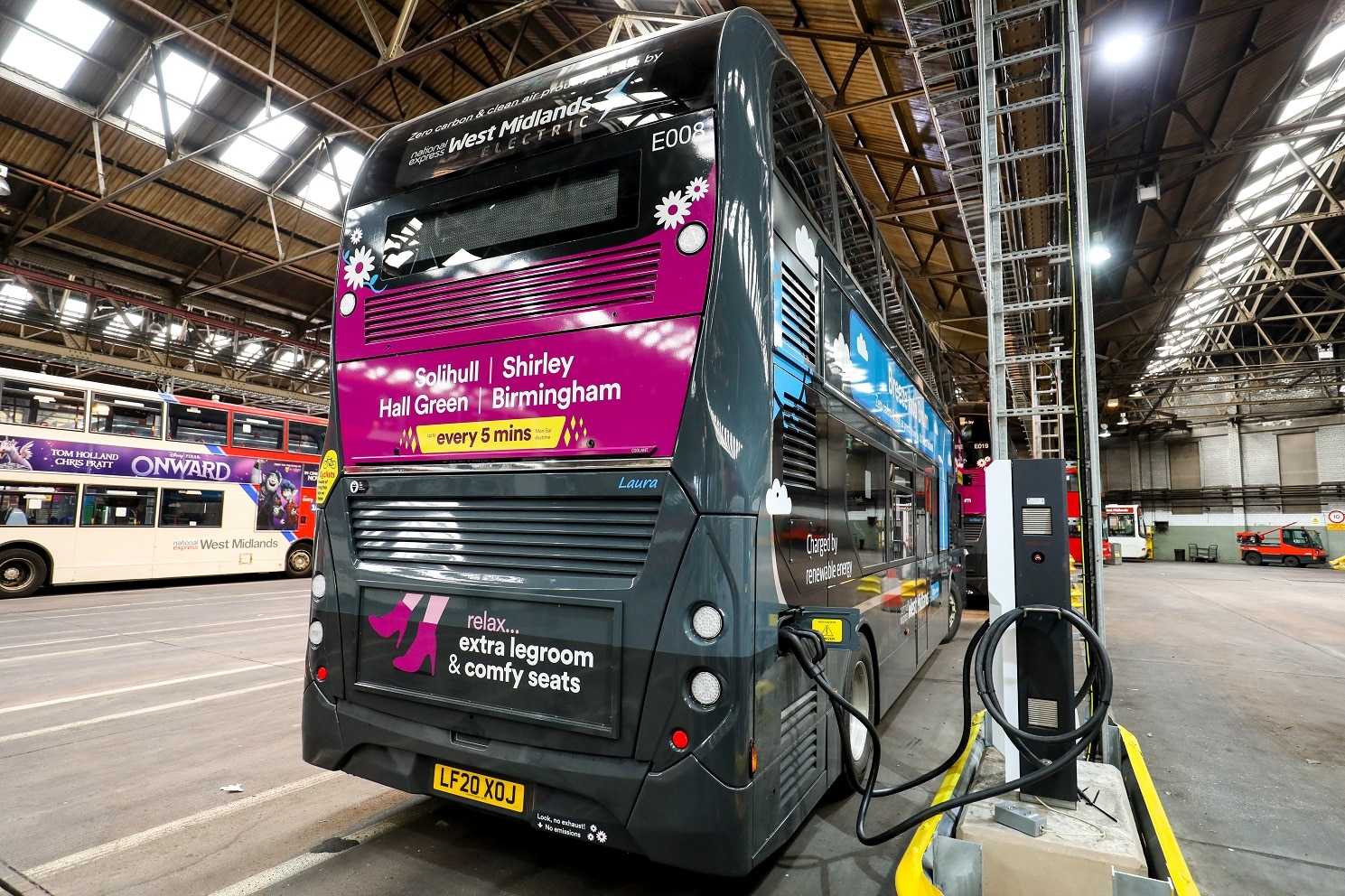
Since the Enviro400EVs entered service in mid-2020, a great deal of learning has been drawn from them. That is an ongoing process, overseen by Head of Zero Emission Implementation Vic Duddy.
The work will influence how National Express shapes its transition towards entirely emission-free bus operation. While “every day is a learning day,” Vic says that the Enviro400EVs are delivering what BYD and ADL promised.
Getting the best from zero-emission requires thought: National Express
Key to rolling out battery-electric operation on a wider basis for NXWM is leveraging its understanding of the existing buses and how to get the best from them. On a basic level, that involves training drivers and providing coaching where necessary. Their individual styles are the biggest influence on energy usage.
“Training was key for us and so we invested heavily in it,” says Vic. Each driver received familiarisation with an Enviro400EV from a driving instructor. That was followed by 45min behind the wheel. Two drivers took part in each session, allowing them also to experience the bus as a passenger. The Enviro400EVs have rear view camera technology that was also factored in.
Vehicle handling is key to the training. One aim of the EV-specific session is to demonstrate how to maximise the use of regenerative braking. The Enviro400EVs have 382kW/h batteries; they serve slow-speed urban routes and thus have sufficient onboard power under normal circumstances, but the volume of insight generated by monitoring their consumption closely has been significant.
Close monitoring has delivered copious insight, operator says
Predictably, energy usage is highest in cold weather. But NXWM has learned that low temperatures, wind and rain is the absolute worst combination. Saloon lights are automatic, and dull weather and short winter days see them switched on for longer than in the summer. That impacts overall efficiency.
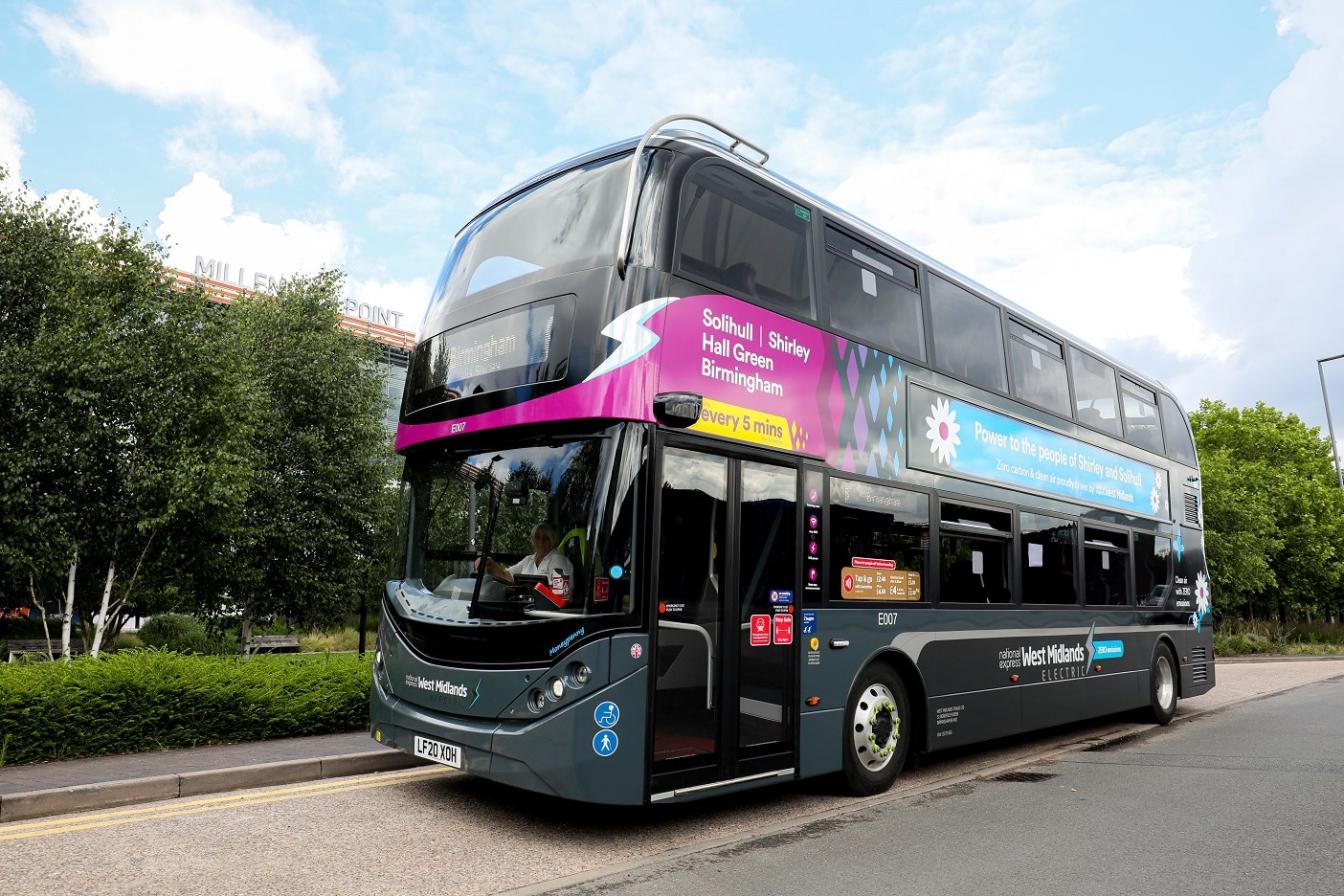
“We have had buses cover up to 280km and return with a state of charge above 20%,” Vic says.
“That is a good day. If the weather is warm and sunny, we send the Enviro400EVs out and forget about them. If it is cold and raining, we keep a closer eye.” The lowest range reported has been around 220km.
From the manufacturers’ point of view, the next iteration of batteries for the Enviro400EV will grow its range “by around 30 miles,” says ADL Customer Development Director Keith Watson. Beyond that, the focus will be on energy density and reducing battery volume to allow passenger capacity to rise.
While NXWM monitors drivers of the Enviro400EVs, and coaches them on how they could improve their energy efficiency, it also analyses the routes that the buses are used on to identify high-energy hotspots or locations where potential for more regeneration exist.
One unexpected but useful learning came from the need to keep windows open to mitigate COVID-19 transmission. NXWM found that as temperatures dropped, this measure led to a significant rise in energy consumption by the buses’ heating systems, which are most efficient when recirculating air. Examination of the issue led to an anti-viral filter being installed in the heating apparatus. That allowed the windows to be closed, and energy usage return to normal.
Energy usage influences electric buses’ infrastructure needs
Minimising energy use is important from a cost perspective. While that is easily measured in terms of daily kW/h consumption, it is also a consideration from an infrastructure installation standpoint.
Zenobe works closely with NXWM on optimising energy and infrastructure costs for the operator’s electrification project. Within Zenobe’s arsenal is the use of solar power and stationary batteries to smooth the peak draw from the grid. That is important if outgoings are to be kept as low as possible, says Founder Director Steven Meersman. Solar power is free energy, but a reduced peak draw from the grid also has a major influence on financials surrounding infrastructure.
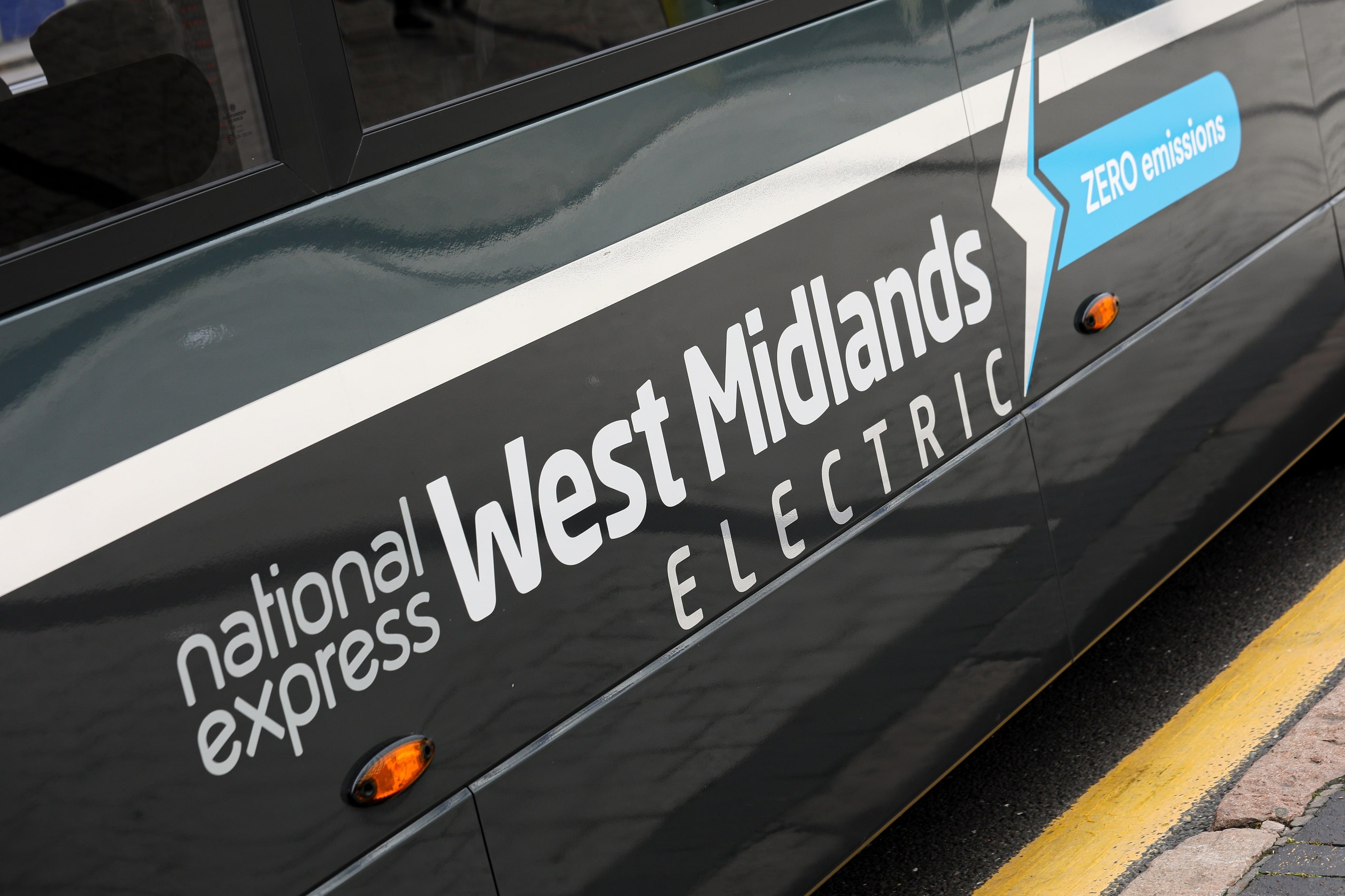
Steven uses National Express Coventry’s depot as an example. It currently operates 171 buses, but upgrade work will allow for a maximum of 200 battery-electric buses to ultimately be based there.
Plugging them all in to nominal 100kW chargers at the same time would draw of 20MW from the grid. That would be “rather painful,” he notes.
“Instead, we can stagger things. Doing so takes the peak draw to 8MW. What we then consider is: ‘Do we charge each vehicle from zero to 100%?’ The answer is no. Then we factor in the kW per kilometre consumption, which further shaves the peak. With some on-site storage and solar power, and good driver training, the initial 20MW can be taken to somewhere less than 5MW.”
National Express ‘not convinced’ by roadside opportunity charging
Vic adds that NXWM “is not convinced” about pantograph-based on-road opportunity charging. Each depot has some duties that return to base between peaks, and top-up charging at that time will help to square the circle of possible range limitations late in the evening. NXWM also sees a rosy future for hydrogen, potentially on its higher-speed routes, and it is open to having both power sources in the same garage.
Work by BYD and ADL to extend the range of charging options is an important part of the longer-term transition. Models in the Enviro EV range can be specified with AC and DC provision on the same bus and with sockets on both sides. The Enviro400EV additionally has the option of roof-mounted bars to allow a pantograph connection, which may be useful in some older depots.
Learning won’t stop as bus electrification progresses
National Express has found that the Enviro400EVs in its fleet at Coventry and Yardley Wood work well. Chief Technician Darren Astbury explains that modelling of an electric bus and a comparable diesel shows around a 30% lower maintenance requirement for the former.

As the Enviro400EVs are still under warranty NXWM has little need to work on the high- and low-voltage aspects of them, although it will take on that responsibility in time.
Currently the industry’s focus for electrification is on the low-hanging fruit. As those opportunities are taken, more difficult scenarios will present themselves.
Key to the overall package is the purchase price of zero-emission buses, but NXWM believes that its early work with the 29 Enviro400EVs demonstrates that its plan for 2030 is entirely deliverable.
What is clear is that harvesting as much knowledge and data from early parts of the transition is imperative to smoothing the way later. A partnership approach involving all suppliers is also key, regardless of the size of the operator. It is not a case of buying zero-emission vehicles and then reopening communication when more are required. Dialogue is constant to ensure that the buses deliver. Thus far for NXWM, they have.





















